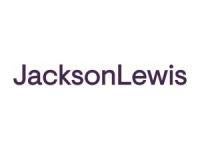As temperatures rise and wildfire season intensifies across the Pacific Northwest, Washington State employers must remain alert – for the safety of their workforce and to follow state law. The Washington State Department of Labor & Industries (L&I) has adopted specific rules that require businesses to protect employees from the dual hazards of heat-related illnesses and wildfire smoke exposure. The regulations require proactive planning and diligent implementation, especially throughout the summer months.
Washington State Department of Labor and Industries’ (L&I) general industry heat exposure standards apply year round to all employers with employees who work outdoors. The regulations specify temperature action levels depending upon clothing type, 52°F for non-breathable clothing and 80°F for all other clothing. Employers are required to incorporate outdoor heat exposure safety protocols into their accident prevention programs and ensure that both employees and supervisors receive annual training.
In addition, employers need to take active steps to safeguard workers, such as providing sufficient, cool drinking water that is readily available to outdoor workers, ensuring adequate shade or alternative cooling methods, and providing preventative cool-down rest breaks. Closely monitoring employee acclimatization and signs of heat-related illness is critical, so employers must also maintain effective communication between supervisors and employees at worksites to report symptoms and seek medical help. Employers are required to implement emergency procedures for responding to symptoms of heat-related illness, as well.
L&I’s wildfire smoke regulations apply broadly to most workplaces with limited exceptions, such as enclosed buildings where windows, doors, and other exterior openings are kept closed or vehicles equipped with proper filtration systems. Before any work begins in hazardous air quality conditions, employers must incorporate a wildfire smoke response plan into their written prevention program. This includes mandatory employee training on wildfire smoke-related risks and procedures.
Covered employers must actively monitor and identify harmful wildfire smoke exposure and implement a two-way communication system that keeps employees informed about current air quality conditions and available protective measures. Employees may report deteriorating air quality conditions or symptoms of smoke exposure without fear of retaliation. The state regulations outline air quality measurement and calculation guidance for employers who must provide all employees “with information and training regarding wildfire smoke before work exposes” the employee to the threshold fine particulate matter (PM2.5) concentration level, and annual training thereafter.
When air quality reaches certain PM2.5 thresholds, as outlined in the rules, employers must escalate their protective measures. These may include providing access to enclosed spaces or air-filtered vehicles, supplying portable high-efficiency particulate air (HEPA) filters for enclosed areas, relocating work, modifying schedules, increasing rest breaks, reducing work intensity, and distributing respiratory protection at no cost to exposed employees.
Additionally, employers must respond appropriately to wildfire smoke exposure symptoms and ensure workers exhibiting symptoms seek medical attention without penalty.




 />i
/>i

